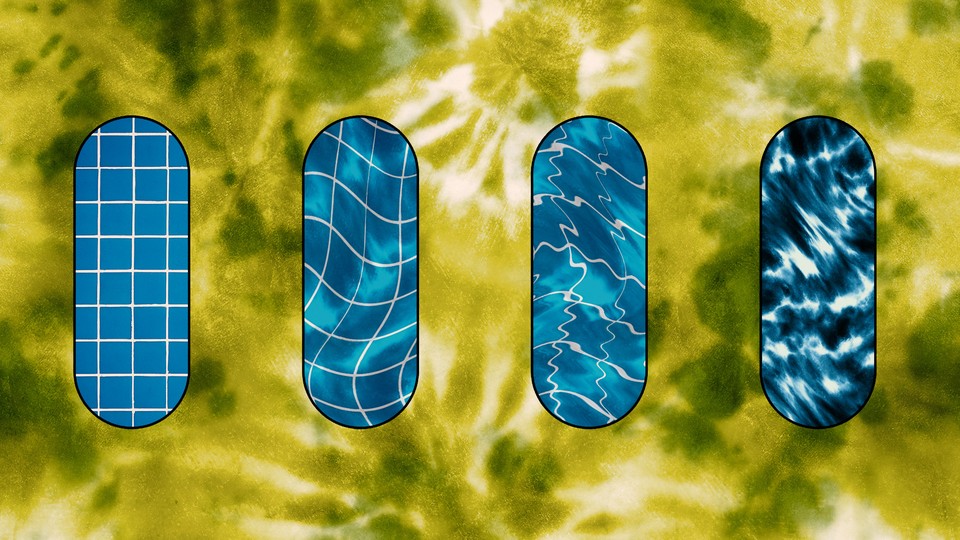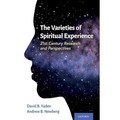Tripping on Nothing
7 min read
Ibogaine, a psychedelic compound found in plants native to central Africa, is notorious for the intensity of the trips it induces. Those who consume it are plunged into vivid hallucinations, often preceded by a loud buzzing noise, that last between 24 and 48 hours. In one case report, a 29-year-old woman from Gabon met her dead relatives, and later looked into a mirror and saw a woman crying and holding a baby. A middle-aged American man experienced himself from the perspective of a “Mexican little boy and I’m praying on the side of a road.” When he opened his eyes, one of the people in the room appeared to resemble “a big praying mantis.”
Late last year, Arthur Juliani, a 32-year-old research scientist at the Institute for Advanced Consciousness Studies, was decidedly not taking ibogaine, but was ingesting something similar. He had obtained tabernanthalog, a research molecule designed to mimic ibogaine’s chemical structure and potential effects on neuroplasticity, but not cause any hallucinations. About 45 minutes after he swallowed his dose, Juliani started to feel a kind of “spacious attention,” he told me. On a walk outside, he found that anywhere he looked appeared like a “perfectly framed photograph, distinct and standing on its own.” When he went home for lunch, he ate a bell pepper “in the slowest and most intentional manner I had ever eaten a vegetable in my life.”
Tabernanthalog is part of a wave of drug development that draws inspiration from psychedelics while attempting to remove or refine their trips. Many of the compounds involved are targeted toward some medical purpose; tabernanthalog, for example, is being researched as a treatment for substance-use disorder. Such work has led to debates among psychedelic therapists and researchers about how important a drug experience is for mental-health outcomes. But Juliani’s encounter with tabernanthalog provokes a more complex question: If novel psychedelics and “pseudo-delics” tickle brain receptors in a way that changes people’s subjective experience—perhaps in a manner less intense than traditional psychedelics, and more on par with prescription or over-the-counter drugs—can one confidently say that the people who take them aren’t tripping? As the pursuit of non-hallucinogenic psychedelics advances, the definition of a trip as something induced by a discrete set of substances is set to evolve alongside them.
These days, the hottest new psychedelic drugs might be the ones that feel as close to nothing as possible. In 2022, scientists made a trip-free analogue of LSD to research as an antidepressant. Another is being investigated as a treatment for cluster headaches. This month, the biotech company Bright Minds Biosciences announced that its new compound, which interacts with the same serotonin receptors as psilocybin and LSD but doesn’t cause hallucinations, had a “similar efficacy” to morphine at reducing pain. The federal Defense Advanced Research Projects Agency is developing novel compounds for chronic depression and post-traumatic stress that are not hallucinogenic but are inspired by psychedelic compounds.
These compounds are mostly being tested in research labs and administered in clinical trials, but curious psychonauts have said online that they’ve purchased their own samples to see just how non-hallucinogenic they are. Josh Hardman, the founder of the publication Psychedelic Alpha, collected online reports from a dozen people who claimed to have tried tabernanthalog. Many of the resulting experiences sound trip-like or trip-adjacent. One person said it was “basically the body high of psychedelics without the visuals.” Another said, “Everything had a deeper layer of thinking, almost like I had unlocked a childish part of my mind that I had long forgotten.” (David E. Olson, a biochemist at UC Davis and the co-founder of Delix Therapeutics, the company developing tabernanthalog, said that he considers it dangerous to order drugs made by “clandestine chemists” on the internet because “there is no way to guarantee the identity, purity, or dose of the drug,” and that anecdotal reports can be untrustworthy.)
Defining a psychedelic experience was difficult even before the introduction of these novel compounds. The word comes from the psychiatrist Humphry Osmond, who argued in a 1957 letter to Aldous Huxley that similar effects could arise from drug use, epilepsy, schizophrenia, starvation, vitamin deficiency, yoga practices, and dervish dancing. “It is all one to me,” Osmond wrote. Aidan Lyon, a philosopher at Leiden University in the Netherlands and the author of Psychedelic Experience: Revealing the Mind, has argued that breath work, meditation, and even engaging with a piece of art could count as psychedelic experiences. (In “museum dosing,” people do both: look at art while tripping.)

Peter Sjöstedt-Hughes, a philosopher of mind and metaphysics at the University of Exeter, in the U.K., agrees with Osmond that a trip should be defined by phenomenology, not pharmacology. For example, he told me, “A number of people have tried to define psychedelic as operating on the serotonin receptors, but that immediately can’t be true because it would exclude salvia divinorum”—a hallucinogenic plant in the mint family. Mike Jay, a historian and the author of Psychonauts: Drugs and the Making of the Modern Mind, told me that the effects of a psychedelic analogue may be construed as either trips or side effects, depending on when and how people experience them.

These debates are more than academic. Earlier this year, the FDA rejected an application for a psychedelic drug, MDMA, to be used to assist psychotherapy for PTSD. The biotechnology company Compass Pathways is poised to seek approval for psilocybin as a medication for treatment-resistant depression as soon as 2025. Medical interest in hallucinogenic drugs is currently higher than it’s been in decades, and in order to understand how psychedelic-assisted therapy might help or harm people, researchers are eager to tease apart psychedelic experience from any underlying biological effects. Perhaps certain aspects of a trip could improve or reduce a drug’s efficacy against, say, depression or PTSD; if so, researchers need to be able to measure and define those effects to design successful treatment protocols. The company Mindstate Design Labs even hopes to isolate and enhance the parts of a psychedelic trip that are therapeutically useful. If they’re successful, you could perhaps one day take a pill just for the psychedelic-induced sensation of limitless unity, without the ego loss that sometimes accompanies it.
In a recent Nature Reviews Psychology paper, Johns Hopkins researchers argued that the field needs a new, rigorously validated scale of psychedelic experiences to accurately capture what people go through when they’re tripping. There’s too much variation among the existing measures, David B. Yaden, one of the study’s authors and a co-writer of The Varieties of Spiritual Experience, told me. The 5-Dimensional Altered States of Consciousness Questionnaire scale, for example, includes the measure of “oceanic boundlessness,” but it’s not mentioned in the Inventory of Nonordinary Experiences, which includes visions of ghosts in its rubric.

Non-hallucinogenic, consciousness-altering experiences, like those reported to result from tabernanthalog use, sound far away from such mystical experiences, and more akin to how some people might feel after drinking a glass of wine or a strong cup of coffee. “Many of us are just filling our bodies with substances that cause acute alterations in consciousness of various degrees,” says Chuck Raison, a psychiatry professor at the University of Wisconsin at Madison. Millions of Americans take prescription drugs that affect their psychology, and their numbers are only growing. Psychedelic-inspired drugs might end up resembling many other FDA-approved psychoactive pharmaceuticals, or the wide variety of other things with which humans regularly modify our consciousness, such as supplements, caffeine, alcohol, meditation, exercise, sex, and sleep (or lack thereof).
I told Raison that I’m sensitive to caffeine, and if I drank three cups of coffee, I would likely have an intense physical and mental experience—would that be a trip? The real marker of a trip, he told me, is that it “is different from one’s typical waking awareness in such a way that it produces longer-term changes in perspective or behavior.” After my coffee, I might feel high, he said. “A day later, other than thinking about how odd it was that the coffee hit you so hard, would your life change? The experience would come and go. But psychedelics tend not to do that.” A trip, whatever it is, stays with people. Juliani’s time under the (alleged) influence of tabernanthalog certainly seems to have stayed with him. “I entered into what was clearly an altered state of consciousness, and I stayed there for some number of hours, and I came out of it,” he told me. It was, he added, “a reminder that there isn’t just one kind of consciousness,” but many to inhabit.
In his 1902 book The Varieties of Religious Experience, the psychologist William James wrote that one quality of a truly transformative experience is that it’s ineffable. Sjöstedt-Hughes told me something similar. “One thing that certainly distinguishes psychedelic experience from ordinary states of consciousness is the fact that you can have experiences for which there exist no words,” he said. Researchers will continue trying to break down that ineffability, but in the meantime, Yaden said, identifying a trip might ultimately come down to what he’s called the “orgasm test”: If you have to ask if you had one, you probably didn’t.

When you buy a book using a link on this page, we receive a commission. Thank you for supportingThe Atlantic.



